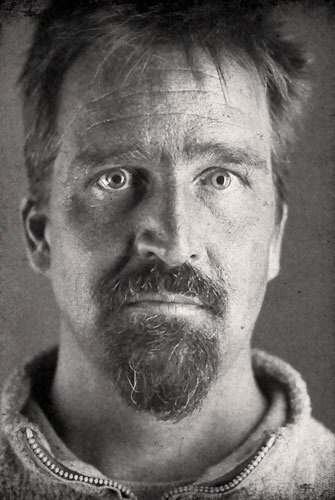Sol Hill was born in Albuquerque, NM in 1971, to artist parents who founded the first
contemporary art gallery in Santa Fe. His early memories were of being with his parents
in their respective studios and of being in their gallery in Santa Fe. As a child the
mysterious objects and paintings that pervaded the gallery intrigued him.
Contemporary art works were prevalent both in the gallery and at home. Looking at
those artworks felt like observing some secret alchemical language that Hill wished to
learn. Growing up, Hill lived all across the United States, and in Jamaica and Germany. He
majored in International Affairs and German at Lewis & Clark College in Portland, OR
and at Maximilian Ludwig Universität in Munich, Germany. He also studied printmaking
in college and then became deeply involved with photography while in Germany. He
later returned to Santa Fe and founded Zen Stone Furnishings with his wife, a paper
artist from Brazil. Together they designed and manufactured hand crafted home
furnishings from stone, twigs, copper and handmade paper. After an intense medical crisis, Hill decided to dedicate himself to fine art. He went on to study photography at the Brooks Institute in Santa Barbara, where he received an MFA in 2010. Hill travels regularly and often to Brazil to visit his wife’s family. Travel has powerfully affected his vision as an artist. Although Hill uses some of the latest digital
photographic equipment and embraces digital photography, he finds that he is drawn to the kind of liberation found in embracing the mysterious and unfamiliar rather than that which is crisply defined and well known.
About Token Feminine:
The mannequin is a token feminine used to impart cultural conventions of the idealized female image In this body of work I examine mannequins in storefront windows as symbols of consumer culture. I see them as emblems upon which the desire and fantasy of sex and fashion are draped and from which complex valuations of body image are ingested. The mannequin is a token feminine presence used to impart cultural conventions of the idealized female image. I dissipate these literal mannequin pictures by interrupting the expected information
and accepting the digital noise, which are undesirable artifacts produced by false
exposure, inherent to the process of capturing digital images. This allows me to explore
the nature of the boundary between the reverie of the token feminine and the reality of
the commercial icon.
About Urban Noise:
I seek stillness within the modern day information overload through the act of unconventional street photography.
Urban Noise combines an exploration of the aesthetic and conceptual value of digital noise in photography with a contemplative study of the contemporary urban environment. Digital noise is a reviled artifact inherent to digital imaging. I challenge the notion that this artifact is inherently worthless by using it to render photographs into contemporary visual tropes. It is my tool to address the digital nature of the contemporary world. Digital noise is false exposure produced by energies other than light, namely heat,
electrical current and “cosmic noise.” Cosmic noise is the term for invisible wavelength
energies comprised in part of man-made signals from our built and technological
environment mixed with the electro magnetic energy produced by human bodies. The
resulting noise from these interfering energies transforms my photographs.
The contemporary urban environment is flooded with so much extraneous information
that we necessarily turn most of it into background noise to survive. There is so much
conflicting information competing for our attention that I am intrigued by how we sort
out what is worthy of our attention, from meaningless background noise. I seek my
own stillness within the overwhelming cacophony of modern day information overload
through the act of unconventional street photography.
